Most children are fascinated with outer space. Space never ends, and there is an infinite amount of stuff we still don’t know about the galaxy. Maybe your child is just curious or dreams of becoming an astronaut one day to know more about the mysteries of the universe.
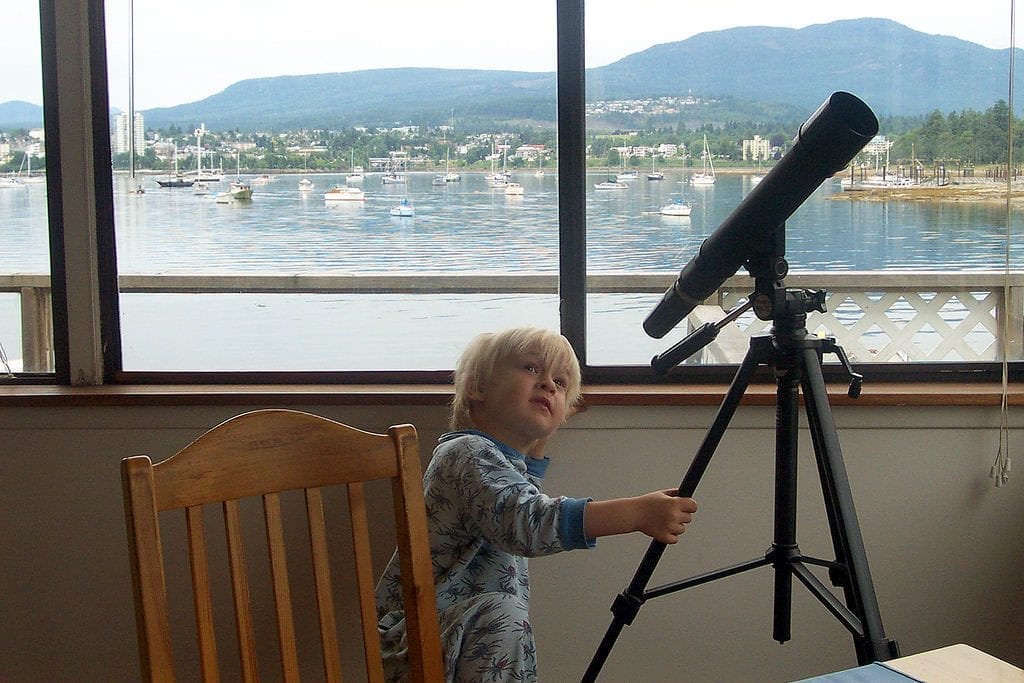
Whatever their intention is, a kids’ telescope can help increase their interest in the galaxy above them. However, when you’re hunting for a telescope for kids, you may wonder what features you should look out for. Here are some highlights and considerations to make.
Younger Kids Vs. Older Kids
If your child is a toddler or is younger, a toy telescope may suffice. These are usually plastic, brightly colored telescopes that cannot see the stars, but instead show the children images and sights. Think of it as a more advanced kaleidoscope.
If your child is older, there are kids’ telescopes that are similar to the real thing. They actually can see the stars and the moon. While they are less advanced and built for smaller people, they are still quite useful and can interest your child.
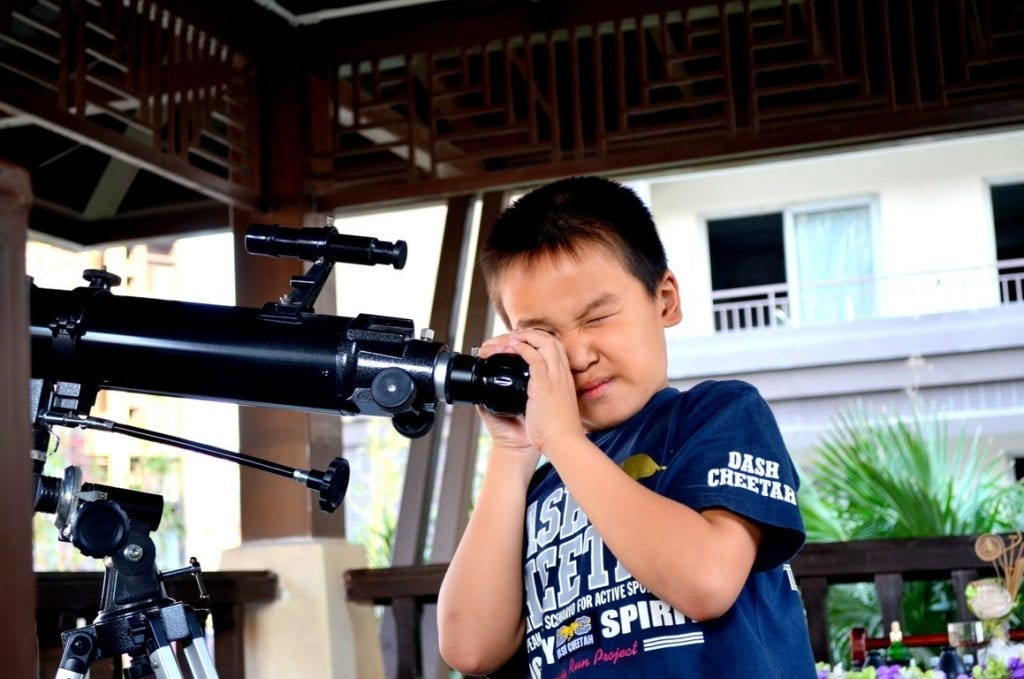
Look at the Aperture
Aperture is vital in cameras and valuable in telescopes too. The bigger the aperture, the more light a telescope can take in. The lighter, the clearer a kid can see. A kids’ telescope won’t have a fantastic amount of aperture since they are usually too small for that, but a good kids’ telescope should have enough for your child to get a clear picture. A child may be bored or disappointed if all they can see are blurry images.
Type of Telescopes
There are three types of telescope: refractor, reflector, and compound. Let’s break all three of them down for you.
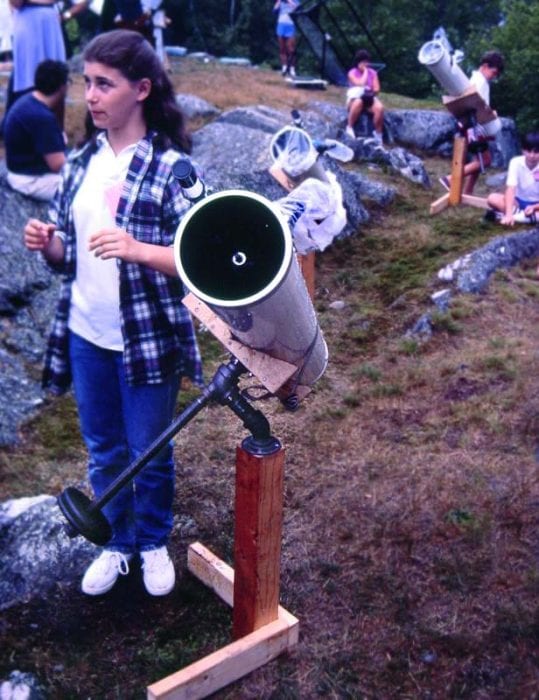
Refractor
It is a common type of scope, and what most kids’ scopes are made of. Refractor scopes have one large lens. With that, they are easy to use and provide enough light for your child to see. They are durable, which makes them useful for a clumsy kid, and they don’t require much maintenance. For a kid, maintenance can be a hassle, which is why we say a refractor scope is a good starter. It delivers bright images with lots of contrast. Also, the eyepiece is located in a convenient spot, allowing you to look directly in the sky.
With that said, refractor telescopes aren’t suitable for shaky hands or vibrations. It is due to their extended sizes. They are also heavy, so you may need to help when you need to move the telescopes. Telescope for kids shouldn’t be too heavy for them to enjoy. Also, a cheaper scope may have a hard time showing color. Finally, with refractor scopes, they may have less aperture for the buck.
Reflector
Reflector scopes use mirrors, as you may have assumed. The eyepiece is in the front. Reflector telescopes tend to have more aperture than other models. Because of how they are built, you will get bigger and brighter pictures of the sky, which means more magnification and more accessible to see objects that may be faint. However, they may require more maintenance, such as having to adjust and recoat mirrors. Also, reflector scopes are not suitable for anything that’s on Earth, so beware.
Compound
Compound telescopes use both lenses and mirrors. It allows your child to see everything closer. There is an eyepiece in the back, too.
A compound telescope has a wide view, and it allows for contrast. Contrast is essential, and we believe your child will realize that the very second they look out a telescope. They are also great for taking pictures from, too.
Because they have a shorter tube, they are lighter. It is ideal for kids on the go. They are also easier to use and require less maintenance. However, they are more expensive and maybe bulkier. Also, the images a child sees may lack the brightness other types have.
Which type of scope you’ll want to get your kid can depend on what they need. Refractor scopes are usually a good starting point, but not all kids are created equal.
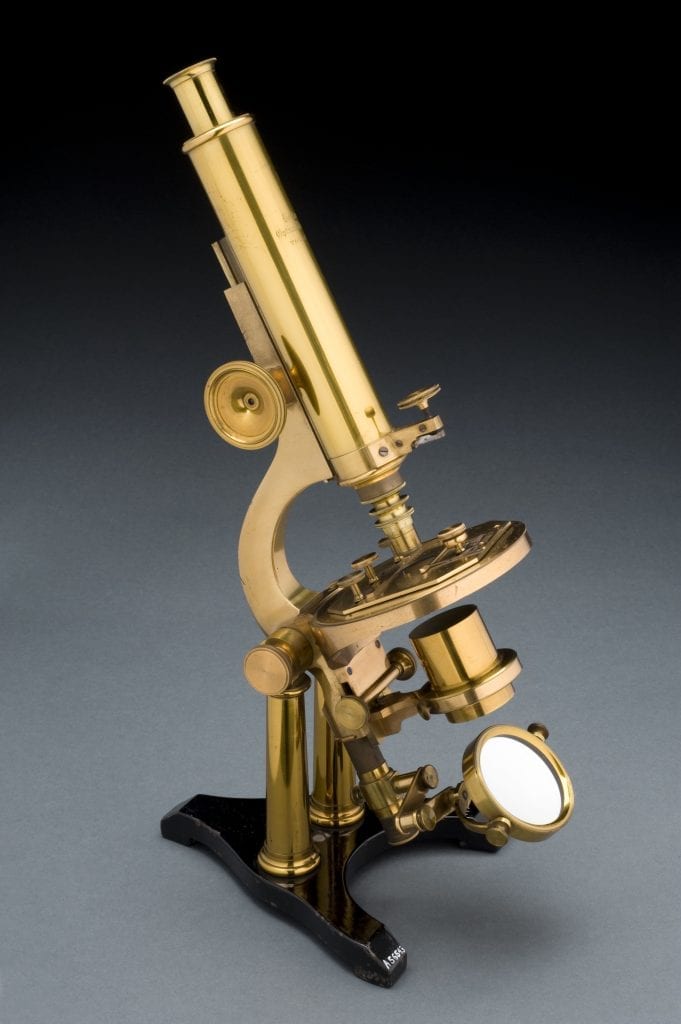
Magnification
The eyepiece of the telescope can determine the magnification. Many telescopes will also give more eyepieces for different levels of magnification. The more magnification, the bigger the sites will be. However, magnification means nothing if the aperture is poor. If you have a low aperture, it can be one blur. You’ll want a balance of both.
Accessories
Many accessories may come with a scope. Here are a few of them.
Tripod. It allows you to prop up a telescope and see better. A good tripod needs to be sturdy and allow for a child’s fumbling.
A telescope is nothing if you can’t try it from different spots. A carrying case can help a child organize, pack, and unpack accessories.
Software. Some scopes may have computer software to educate a child more on space and how to use their scope.
A telescope that has a bundle of accessories can help you save in the long run. Some accessories you may not need, but there are some you will probably want to have, such as a carrying case. Make sure you have everything before you purchase.
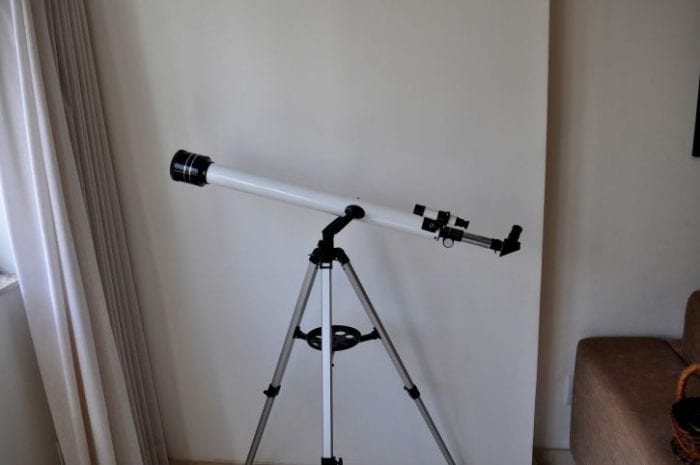
User Friendliness
Finally, a kids’ scope should be easy for them to use. More advanced telescopes have more complicated features, but a kids’ scope should be easy to use, and they shouldn’t have to worry about any hassles.
Not Too Many Pieces
A telescope that has many pieces may mean that your child will lose or break them. When buying a telescope for kids, they should be simple. Unless your child is responsible, do not give them a scope with too many pieces for them to possibly lose.
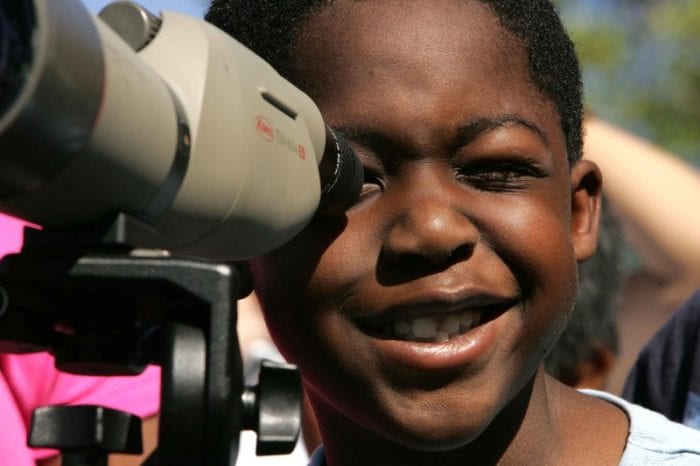
Telescope For Kids Conclusion
A telescope for kids is something they will love forever if they get the right one. The world needs people interested in space more than ever. As the possibility of colonizing other planets and discovering new worlds increases, we will need young minds to give us fresh new solutions. Giving a telescope for kids as a gift will surely be something that they will enjoy.
FAQs On Telescope For Kids
Your telescope must have at least 2.8 inches (70 mm) aperture or more than that. That is because a larger aperture lets you see fainter objects and finer detail than smaller ones can. Check for more helpful guides here.
Last Updated on January 15, 2023 by Rejie Salazar
DISCLAIMER (IMPORTANT): This information (including all text, images, audio, or other formats on FamilyHype.com) is not intended to be a substitute for informed professional advice, diagnosis, endorsement or treatment. You should not take any action or avoid taking action without consulting a qualified professional. Always seek the advice of your physician or other qualified health provider with any questions about medical conditions. Do not disregard professional medical advice or delay seeking advice or treatment because of something you have read here a FamilyHype.com.